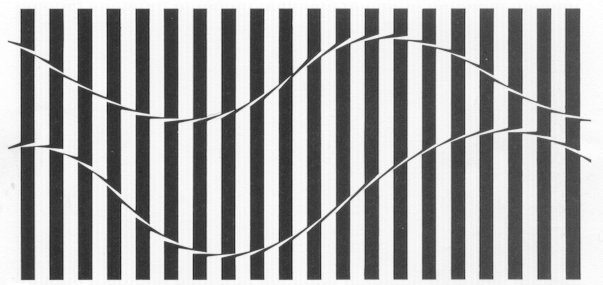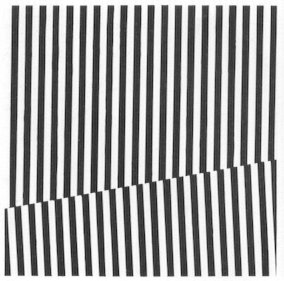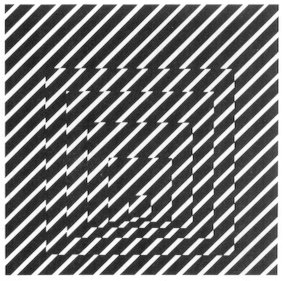|
(5) Passive lines There are various methods to create a line indirectly without drawing a line. This is obviously a line if it is seen from a more general viewpoint although it depends on the surrounding situations. A line can exist even if one is not drawn. In Figure 63, ends of parallel lines in one assembly are aligned as if these edges were cut with a knife. The edges of parallel lines in another assembly are similarly aligned. Since the edges of the parallel lines in both of the assemblies each contact another parallel line, the influence is doubled. A feeling that one straight line exists in the boundary of the assemblies of the parallel lines is well expressed. In Figure 64, faults in the stratums of the parallel stripe are created, and a new line is created along the fault. Then, patterns of five squares surrounded by such passive lines are seen. New lines are created by an amazing method as shown in Figure 62. The uniqueness should be appreciated, and the senses of freedom, sharpness, and elegance are recognized.
A line is like a path or a string which connects two points, and
the "continuation" is its base. The interesting point of Figure 62 is that
a noncontinuous line is created, neglecting the important assumption. There
are many other methods than this and there are thousands of expressions
of lines depending on the methods.
|
||||||


